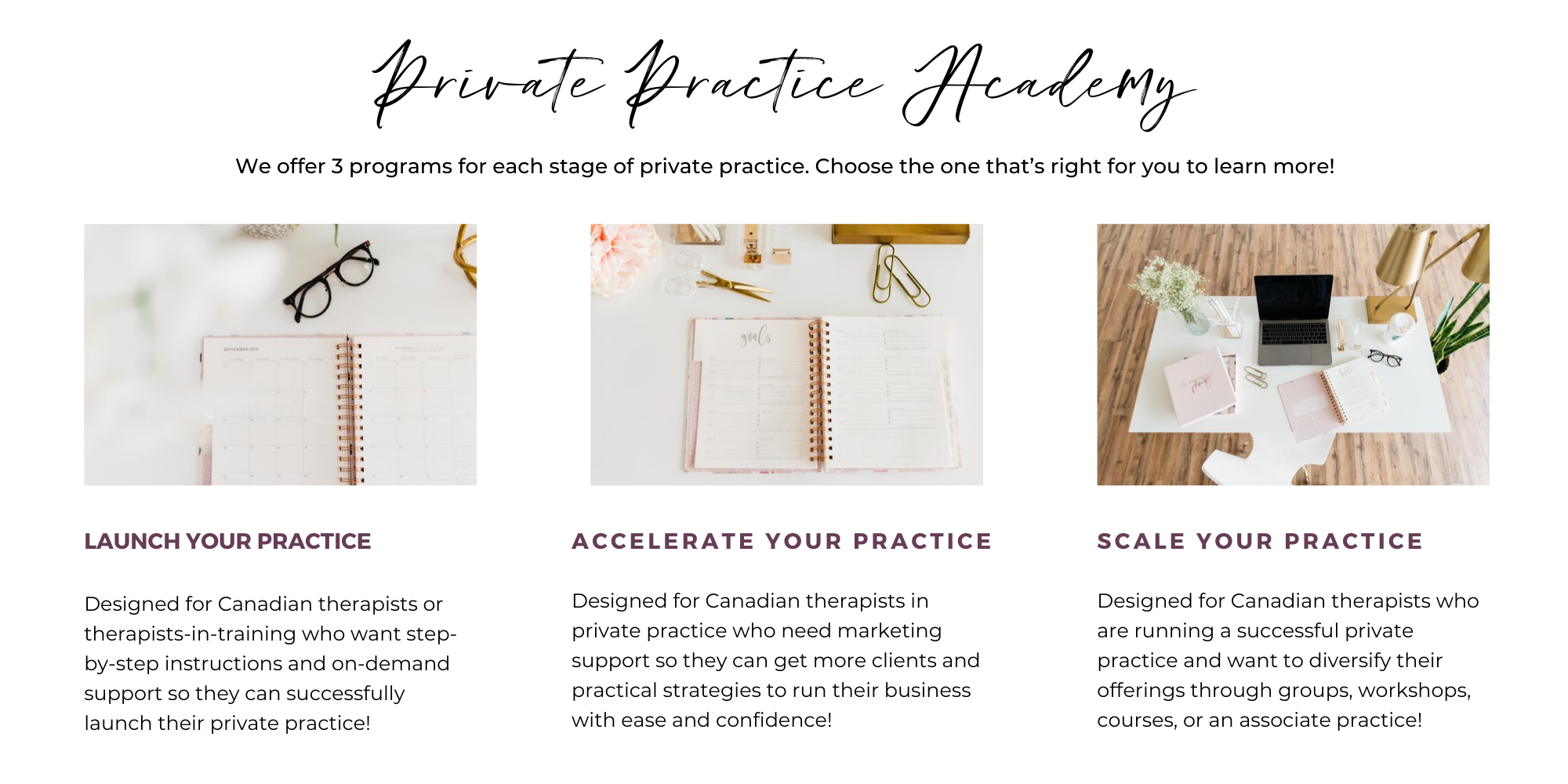How to Connect With New Clients Using Content Marketing
At a time when more people are online than ever, content creation should be a key part of your current marketing strategy as a private practitioner. Not only does content marketing help increase your search engine ranking (learn more about SEO HERE) but it helps attract prospective clients by bringing new visitors to your website. Creating content that aligns with your values and your services helps develop stronger brand awareness and is a great way for your ideal client to get to know you.
Just like it’s important to research keywords for your SEO strategy, it is important to ensure you are creating content that your ideal audience is actually looking for. This content could be in the form of a blog post or article, YouTube videos, infographics or even free trainings or webinars.
By providing free and valuable content to your audience, you increase your prospective client’s awareness of your brand and amplify that crucial “know, like, trust” factor. When it comes to digital content, it’s proven that people are more likely to buy from brands they feel like they know on a personal level, they trust to provide accurate information and that they like because they have similar values, personality traits or even hobbies.
You can build a relationship with your ideal clients through the content you produce. Creating content also helps you establish your credibility online, and SEO ranking. This, in turn, increases your visibility on search engine results pages, driving more traffic to your website. It’s all connected!
There are a few key steps to think about when creating a content strategy:
Set goals for your content
Having a target goal in mind will help to drive the content you’re creating so that it actually serves a purpose. Your goal could include increasing your overall website traffic, building your email list, or generating leads and attracting clients to your private practice.
Whatever your goal is, tailor your content appropriately. If website traffic is your goal, you may find that investing time into SEO research and content writing is beneficial, while creating Instagram content may not provide the results you are looking for.
Create an ideal customer avatar
Think about who your target audience is and speak directly to them. Sometimes it can be helpful to have just one person in mind. This could be modeled after your favourite client or your dream client. Think about their values, hopes and dreams and goals. Also consider their obstacles, pain points, challenges and fears.
The overarching theme of your content should be to provide value to, and solve the problems of, your ideal client. Having a solid understanding of the people who are most likely to benefit from your message and your service will help you create content specifically for them and what they’re searching for on Google or looking to consume on social media.
Create content that reflects your client’s journey
In most cases, your ideal client will have a 3-phase journey. This includes the awareness stage, the consideration stage and finally the decision stage. When developing your content strategy, think about how you can create content that meets the needs of people in every stage of the buying journey.
People in the awareness stage are likely looking to learn more about you, your business and your services. By providing educational content on a problem they may be facing, your audience will begin to look to you as a source of information. Content for this stage could include blog posts or checklists.
The consideration stage typically revolves around your audience searching for specific options to solve their problem or alleviate a pain point. This stage should include actionable content such as a template that your audience can use or a free webinar that they can attend to learn more about a specific topic. The goal here is to demonstrate how your services can benefit your ideal client.
In the decision stage, your audience will be creating a shortlist of options to decide from. Content in this stage can look like a free trial of a workshop or a complimentary consultation.
Create content consistently
Whether it’s blog posts, YouTube videos or podcast episodes, it’s important to create content consistently. Content typically performs better when search engines can establish that it’s produced on a consistent basis. Publishing one blog post per week over the course of a month is better than publishing 4 posts in one week and not posting again until next month.
Having a consistent content schedule also demonstrates reliability and trustworthiness to your prospective clients. People generally appreciate knowing that your new blog post (video or podcast) is released on the same day each week.
Determine how you will distribute your content
Content can be promoted in many ways. Most notably via social media channels such as Instagram, Facebook or Twitter. You can also use Pinterest (a visual search engine) to drive traffic to your website.
Distributing your content through social media can often be done for free which is a great way to preserve your marketing budget for things like email marketing.
Trying to use all of the social media platforms can feel daunting, so don’t feel like you need to be a master of all of them. Start out with one you enjoy using personally and learn more about how to use the different features to market your content. This could include learning more about hashtag strategies on Instagram, how to write SEO descriptions on Pinterest or building a community on Facebook.
As you work through planning and executing your content strategy, consider what content you will produce (if any) for the following mediums:
Social media platforms (Instagram, Facebook, Twitter, etc.)
Website content including blog posts
Video or audio content (Youtube, Tiktok, podcasts, audiobooks)
Downloadable content (checklists, e-books, templates, guides, etc.)
For personalized support with your marketing strategy, you can look into our BYPP Programs.

